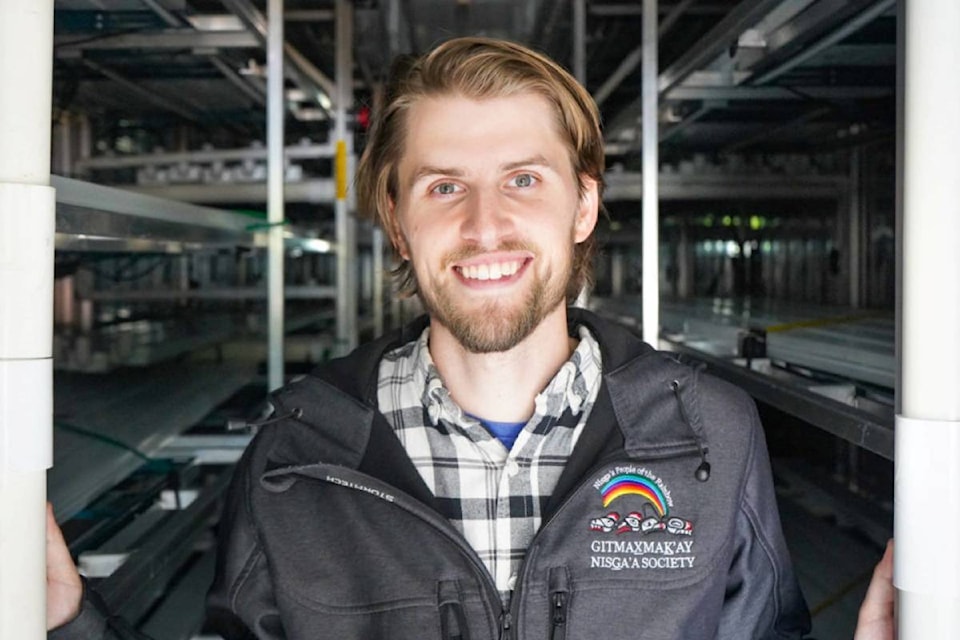A Prince Rupert hydroponic greenhouse has become an overwhelming success with partial financial assistance through B.C. Agriculture Development Funding of which a new round is available, announced the Ministry of Agriculture Food and Development, on July 5.
The funding is available through the B.C. Indigenous Agriculture Development Program to Indigenous entrepreneurs and communities in B.C. who will be able to expand their farming and food businesses if approved.
Prince Rupert has already benefited from the B.C. Agriculture Development Funding with the Gitmaxmak’ay Nisga’a Society (GNS) receiving $15,000 for a hydroponic greenhouse to grow fresh produce.
“We’ve seen such an amazing response to this program from Indigenous entrepreneurs and Indigenous communities all over B.C.,” Lana Popham, B.C.’s Minister of Agriculture, Food and Fisheries, said. “Supporting the planning and developing of farming projects and businesses leads to expanding the province’s agricultural industry and brings more opportunities for First Nations to build food security, create local jobs and grow the local economy.”
The B.C. Agriculture Development new funding round will provide up to $150,000 in two different available streams for food feasibility assessments, agriculture developments, food security planning, and business planning in the first instance. The second stream is for Indigenous entrepreneurs to use for specialized planning and coaching services to develop and plan their food agricultural businesses.
To date, the program has supported 48 communities and entrepreneurs through $297,390 in funding, including Prince Rupert’s GNS.
The grant was used for business development planning and consultancy on subscription-based boxes of hydroponically grown produce provided to GNS citizens of Prince Rupert, Blair Mirau CEO of Gitmaxmak’ay Nisga’a Society, said.
Mirau said the locally grown food has proven extremely popular due to the freshness of a farm-to-table turnaround of less than 24 hours.
He explained that traditionally with retail produce it can be up to a two-week time frame from farm-to-table in Northwest communities after harvesting in the lower mainland or Californian fields, produce then being sent to the distributors, wholesalers, shipping, retail outlets, and the consumers own fridge time.
“We wanted to grow food that is non-GMO, all-natural, no use of pesticides, or herbicides, or anything of that nature.” Mirau said.
There has been a lot of trial and error with the hydroponic greenhouse production project Mirau said, which by definition means some mistakes will be made and some produce, plus ideas ‘will not germinate’.
“The biggest challenge with any new initiative like this is how do you reach equilibrium,” the CEO said. “So, for us, it was just the simple things like how did we get our seeding schedule, fertilization, harvest schedule, maintain temperatures, all of the things that are necessary for the high-tech state-of-the-art greenhouse. It was just a lot of experimentation.”
“By definition, trial and error means you are going to make some mistakes, and some things aren’t going to germinate. And some things may fail and may not be able to make it to the subscription box. But we’ve had very patient and understanding customers who have given us lots of really great feedback.”
One of the unforeseen challenges of the greenhouse project was the overwhelming demand for the food boxes compiled of the local hydroponic produce. The society harvests food twice a week on Tuesdays and Thursdays and the food items are packed and refrigerated in reusable cooler packs ready for pick up on Wednesdays and Fridays.
Originally the GNS had forecasted 50 weekly food boxes for clients, but after posting a link just once, Mirau said more than 150 responses were received.
“We have a waiting list right now with about 40 people on it and in addition to the 70 that are already subscribing.
“We’re enrolling a couple of customers every week as we kind of scale up our production, so we’ll be at full capacity here in the middle of summer,” Mirau said.
READ MORE: Food security and local production were growing concerns at city held public hearing
READ MORE: Hydroponic greenhouse to be rooted in Prince Rupert
K-J Millar | Journalist
Send K-J email
Like the The Northern View on Facebook
Follow us on Twitter
